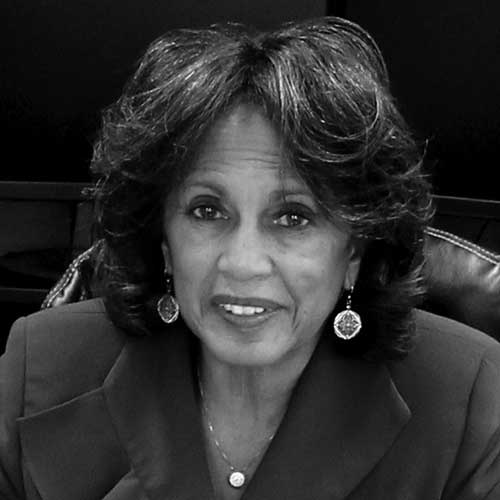With chatbots now ascendent in the latest iteration of artificial intelligence, leaders in nursing and nursing education rise to the challenge of incorporating this and other advanced technologies into improved clinical workflow and patient care.

Beverly Malone, Ph.D., R.N., FAAN
President and CEO, National League for Nursing
Under Dr. Beverly Malone’s leadership, the National League for Nursing has advanced the science of nursing education by promoting greater collaboration among stakeholders, increasing diversity in nursing and nursing education, and championing evidence-based practice. Dr. Malone’s distinguished career has blended policy, education, administration, and clinical practice, including as U.S. Federal Deputy Assistant Secretary for Health. A global leader as well, Dr. Malone served as general secretary of the Royal College of Nursing with a membership of 400,00 nurses, the United Kingdom’s largest professional union of nurses.
A report released by MarketsandMarkets predicts that by 2028, global spending on AI-powered health technologies will exceed $100 billion. Nurses will be vital stakeholders in their effective implementation.
With the nursing workforce stretched to the limit due to the ongoing shortage of nurses — fueled, in part, by a shortage of nurse educators — hospitals and other healthcare providers will undoubtedly benefit from new, sophisticated, and nimble options to deliver information that improves clinical workflow and patient care.
Remote patient monitoring
Here’s one new example of how advanced technology is aiding frontline nursing: remote patient monitoring (RPM). The device-driven technology now makes it possible for patients experiencing an acute medical event or managing chronic conditions to remain in their homes and receive the care they require, whether it be preventative, rehabilitative, or even post-operative.
With the data it generates, RPM could facilitate and expand communication among registered nurses, advanced practice nursing specialists, physicians, and other members of the care team. The potential is exciting; the reality is in the implementation, evaluation, and nursing involvement, leadership, and oversight, for it is nursing that is the interpreter and advocate between technology and the patient, family and community.
This technology is a revolutionary tool providing a continuous and comprehensive picture of an individual patient’s medical status, alerting providers to issues of concern faster than, say, if a person had to await an in-person appointment with a nurse practitioner or doctor at a clinical site. Without caring and oversight, however, this innovation can fall short of providing quality, safe patient care.
RPM may also aid in understanding the home environment that can contribute to or impede health and healing, or pick up patterns of behavior that reveal non-compliance with treatment or medication. Such technology may be of extraordinary value to patients in rural communities that lack easy access to transportation to clinical care located miles away.
Nurses are uniquely positioned to play a central role in mediating information from AI-generated alerts and maintaining the human connection that is so critical to successful patient-caregiver relations. Furthermore, nurses are able to ensure that any unintended consequence of AI, like potential bias in care access or delivery, can be prevented.
An ounce of prevention
The healthcare community has for decades recognized the importance of prioritizing preventative measures and health maintenance over costly and inconvenient interventions like visits to the ER, particularly for those struggling with chronic diseases like diabetes, hypertension, and COPD. Studies have already shown how RPM has improved the health of such patients.
For example, one recent study of COPD patients by the International Journal of Chronic Obstructive Pulmonary Disease documented a 65% decrease in hospitalizations and a 44% decrease in emergency room visits by those patients who were followed at home through RPM.
As the bridge between patients and technology, nurses today need to be properly educated regarding the advantages of RPM and trained in its use. There is value added when this and related technology are harnessed to help nurses become more efficient and responsive.
To that end, there is an urgent call for more nurse educator-scholars who study simulation and other technological advances in nursing education to apply their evidence-based findings to best practices in curriculum and instruction. Simulation educators, in both classroom and clinical settings, are in great demand. Nurse educators with an interest in this specialized branch of nursing education may find a wealth of professional development opportunities available to gain the necessary qualifications for entry into the field.
Organizationally, chief nursing officers will play a leadership role overseeing in-patient care and helping to determine, as part of the senior administrative team, the changes that health and hospital systems must make to prepare patients for a seamless transition to home monitoring, following their discharge. Nurse leaders will also need to become involved in making decisions regarding whether people seeking medical attention require hospitalization in the first place, and if not, see to it that they get appropriate care and treatment at home, aided by RPM.
Rising to the occasion
Nursing education must step up to the opportunity to prepare nurses and nurse leaders for researching, co-creating, implementing, and evaluating these new tools for healing and well-being. Curriculums will need to be updated, academic and clinical partnerships created, and schools of nursing and corporate organizations joined together in a mission to develop technological innovations that will extend safe, quality health care across the nation and the world.
Beyond the logistics of day-to-day remote care, it will be important for institutions to craft policies to ensure that technologies aren’t taking precedence over the mission of patient care. Nursing’s culture of caring will always prioritize the warmth of the human touch over data lacking emotional content.
That’s why it is so critical that nurses and nurse leaders are at the table to help make the best possible decisions around technology and innovations. With the involvement of nursing, better systems are developed, and funding is forthcoming for systems to operate effectively. The process calls for collaboration among experts in nursing informatics; medical ethics; public health policy; engineering; and other stakeholders.
Remote care, while groundbreaking, also needs to develop standards that match the levels of in-patient monitoring and care delivery. Only then may patients and their families feel fully secure and confident, and will nursing be able to fulfill its ultimate calling to truly advance global health, in all its diversity.

